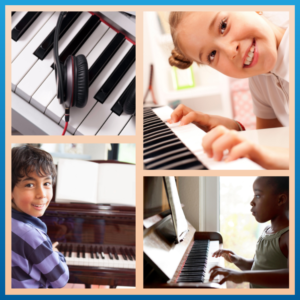It’s the right time to begin piano lessons, but you find yourselves without piano (and wealthy relatives who will buy you one!) Spending thousands of dollars on a musical instrument that we are not sure will keep our children’s interest for many years is not an option.
I went around town and played as many electric keyboards that I could in one afternoon. Not all keyboards were good training tools. Most did not have the weight in the keys that is necessary to develop fine motor skills. Others had a small range in terms of pitch.
What you want in a keyboard:
1. Pretty tone.
This may not like seem an important piece of the puzzle, but you will be listening to that tone for months and years into the future; you want to listen to something you can tolerate. Lower quality keyboards don’t have a pretty tone. If you don’t like it, your child won’t like it, which means your child won’t play it nor practice it nor learn it.
2. Heavy keys
These are also known as weighted keys, but some keyboards have heavy keys that are not technically “weighted.” A weighted key produces a lower or higher volume depending on how hard you hit it. You want to put some pressure on the key before it makes a sound. Lower quality keyboards have very light keys. They produce a sound by mistake even if the finger only slightly presses it down. This is very frustrating for a child (especially the perfectionist). The difference is tenths, maybe hundredths, of a second, but it is a world of difference.
3. Large range.
Count the number of black keys on the keyboard. You’ll notice that they are in a pattern: group of two, group of three, group of two, group of three, etc. A useful keyboard has this pattern at least four times, meaning that its range is four octaves. Anything wider than that is gravy.
Avoid in a keyboard:
Avoid insufferable tone, light keys, and narrow range.
A keyboard that has keys that light up when they are played are usually a distraction to the child. They don’t offer much in auditory or musical notation learning.

